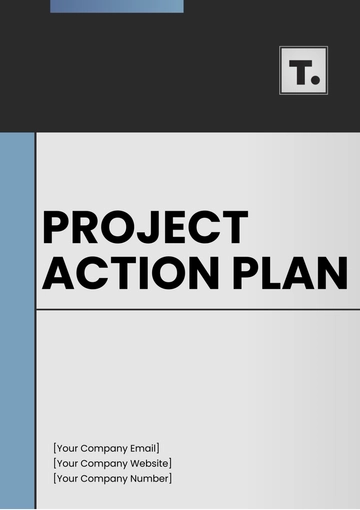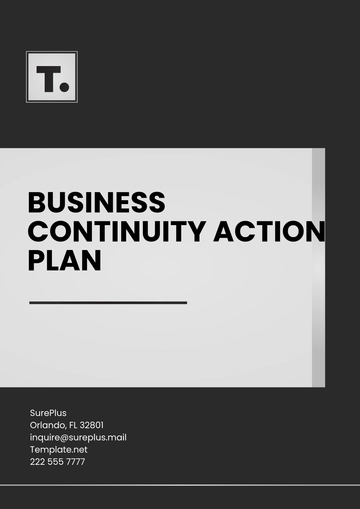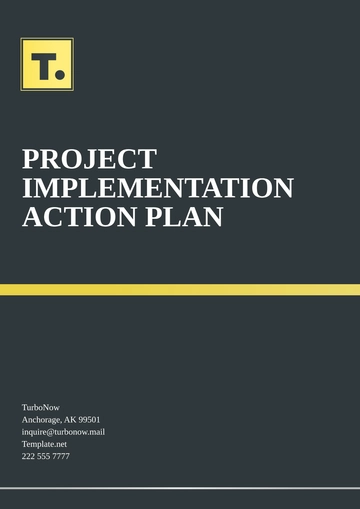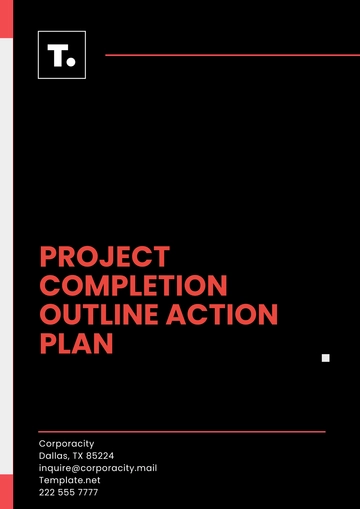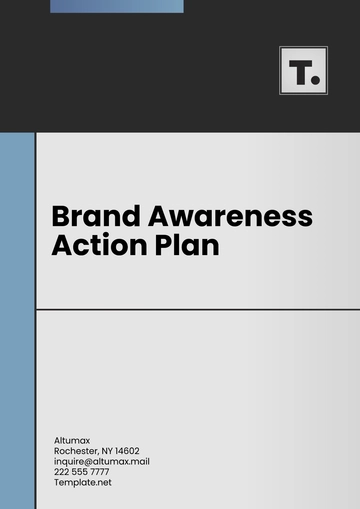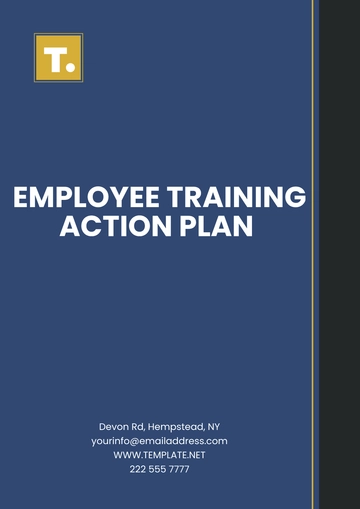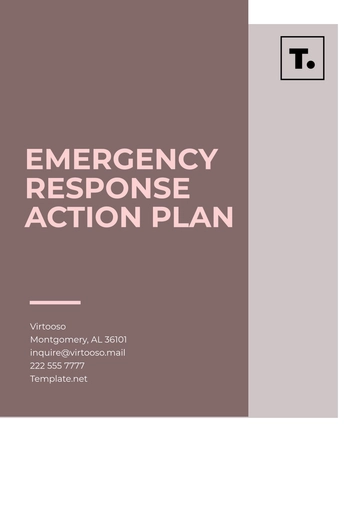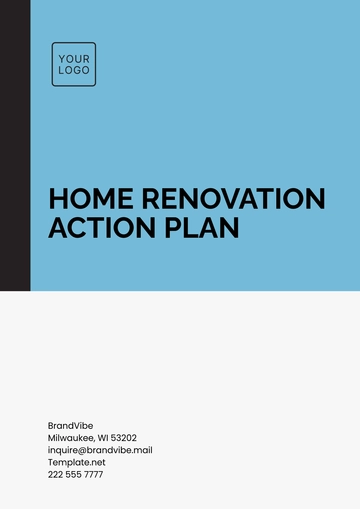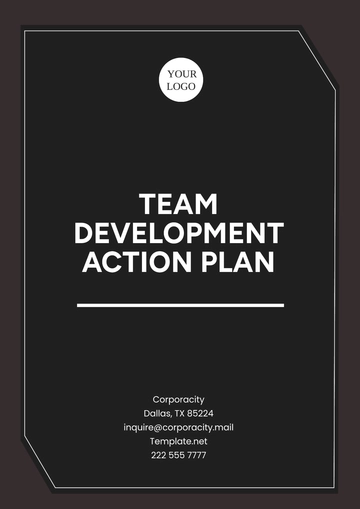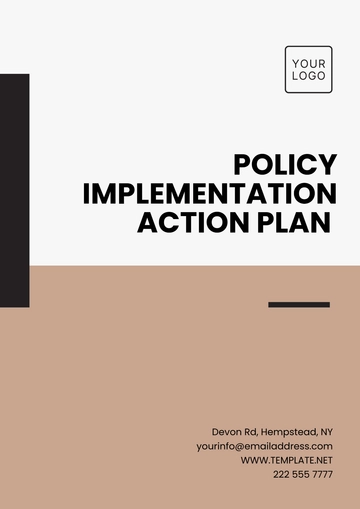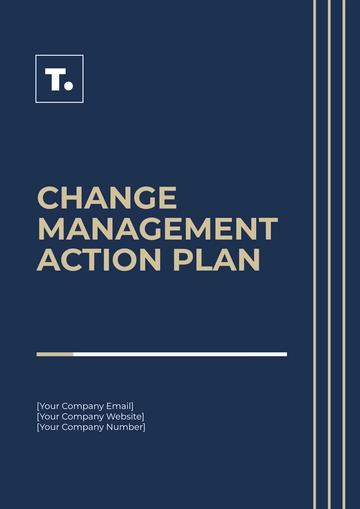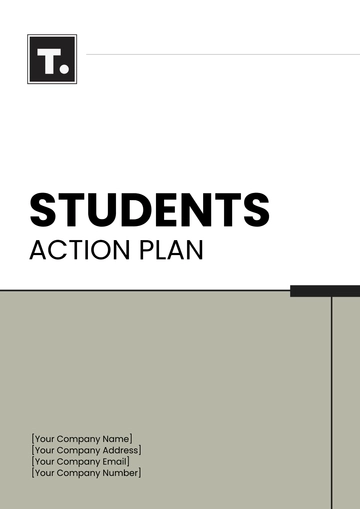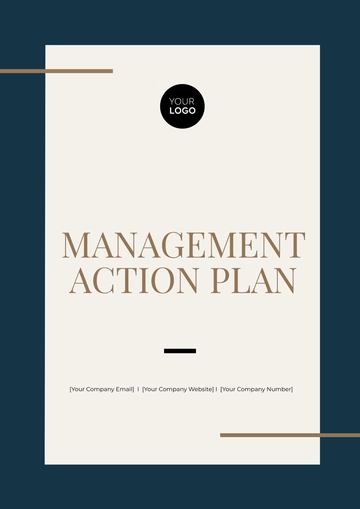Free Car Rental Action Plan
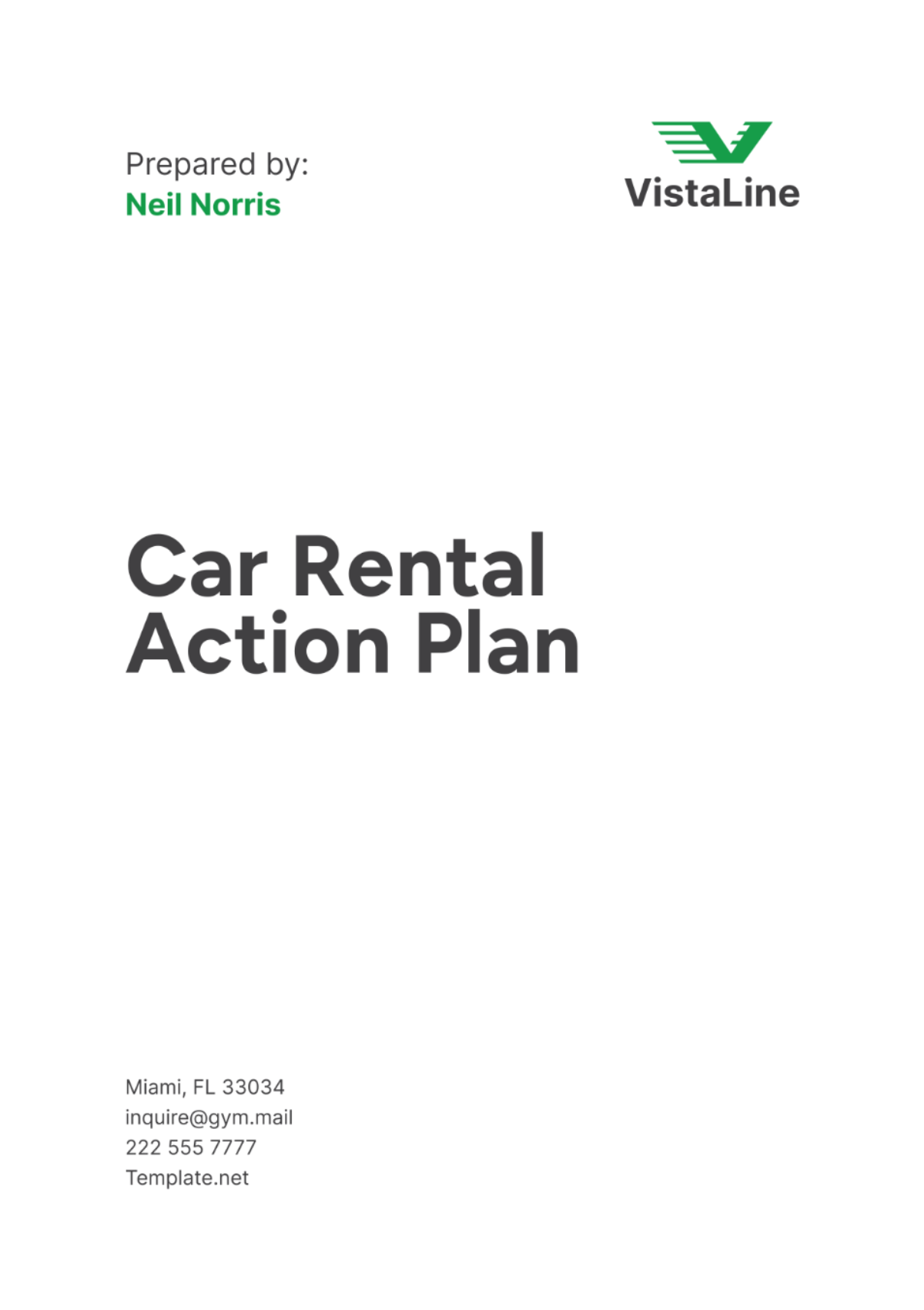
I. Executive Summary
A. Overview of the Car Rental Business
[Your Company Name] is a full-service car rental company dedicated to providing reliable and affordable vehicle rental services. Our fleet includes economy, mid-size, luxury vehicles, SUVs, and vans to cater to a wide range of customer needs. We are committed to offering exceptional customer service and maintaining a well-kept fleet to ensure a seamless rental experience.
B. Mission and Vision Statements
Mission
To deliver exceptional car rental experiences through outstanding customer service, a well-maintained fleet, and competitive pricing. We strive to exceed customer expectations by continually improving our services and adapting to their changing needs. Our mission is to make car rental convenient, efficient, and enjoyable for all customers.
Vision
To be the preferred car rental company in our region, known for quality, reliability, and innovation. We envision expanding our reach and establishing a strong presence in the car rental industry, becoming synonymous with trust and excellence. Our vision includes leading the market in sustainability efforts by integrating eco-friendly practices and vehicles.
C. Objectives and Goals
Achieve a fleet utilization rate of 85% within the first year, ensuring high operational efficiency. Attain a customer satisfaction score of 90% or higher by consistently providing superior service and addressing customer needs promptly. Increase revenue by 20% annually through targeted marketing campaigns, expanding our customer base, and optimizing pricing strategies.
II. Market Analysis
A. Industry Overview
The car rental industry is experiencing steady growth due to increased travel and tourism, urbanization, and a preference for rental over ownership. Technological advancements, such as digital booking systems and telematics, are transforming the industry landscape. The trend towards eco-friendly vehicles is also influencing consumer preferences and industry standards.
B. Target Market Identification
Our primary markets include business travelers who need reliable transportation for meetings and corporate events, tourists looking for convenient travel options, and local residents needing temporary vehicle solutions. Secondary markets consist of students requiring cars for short-term needs, event attendees seeking transport for special occasions, and temporary residents. Understanding these segments allows us to tailor our services and marketing efforts effectively.
C. Competitive Analysis
Key competitors include national brands like Hertz and Enterprise, as well as local car rental services that offer competitive rates. Our differentiation strategy focuses on superior customer service, a user-friendly online booking system, and competitive pricing to attract and retain customers. By analyzing competitors' strengths and weaknesses, we can identify opportunities to enhance our offerings and market position.
D. SWOT Analysis
Strengths: We have a diverse fleet that caters to various customer preferences and needs, strong customer service that builds loyalty, and a strategic location that attracts a high volume of customers.
Weaknesses: Limited brand recognition compared to established competitors, initial high operational costs, and reliance on seasonal demand fluctuations.
Opportunities: Expansion into new markets, developing partnerships with local businesses and travel agencies, and leveraging technology to enhance customer experience.
Threats: Economic downturns affecting travel and tourism, fluctuating fuel prices increasing operational costs, and intense competitive pressure from both established and emerging car rental companies.
III. Fleet Management
A. Vehicle Selection and Procurement
Types of Vehicles Needed
Our fleet includes a range of vehicles from economy cars for budget-conscious customers to luxury cars for those seeking a premium experience. We also offer SUVs for families and groups, and vans for larger parties or cargo needs. Ensuring a diverse selection allows us to meet the varying preferences and requirements of our customers.
Procurement Strategies
We will establish strong relationships with multiple dealerships to secure favorable bulk purchase discounts and terms. Additionally, exploring leasing options will help manage upfront costs and provide flexibility in fleet management. Regular market analysis will guide procurement decisions to keep our fleet modern and appealing.
B. Maintenance and Repairs
Regular Maintenance Schedule
Implementing a stringent maintenance schedule ensures the reliability and safety of our fleet. Monthly inspections will cover all critical systems, while oil changes will be performed every 5,000 miles, and tire rotations every 7,500 miles to maintain optimal performance. This proactive approach minimizes downtime and extends the lifespan of our vehicles.
Repair Protocols
Establish partnerships with local repair shops to ensure quick turnaround times for any necessary repairs. Maintain detailed service records for each vehicle to track maintenance history and identify recurring issues. A prompt and efficient repair process ensures our vehicles are always in top condition and ready for customers.
C. Fleet Tracking and Management
GPS and Telematics Systems
Implementing GPS tracking provides real-time location data, enhancing security and operational efficiency. Telematics systems monitor vehicle health, enabling timely maintenance and reducing the risk of breakdowns. These technologies also provide valuable data on usage patterns, helping to optimize fleet utilization.
Usage and Availability Tracking
Utilizing advanced rental management software allows for efficient tracking of vehicle availability and usage. This system helps in planning and scheduling maintenance without disrupting rental operations. Accurate tracking ensures that customers have access to the vehicles they need when they need them.
D. Disposal and Replacement
Disposal Strategies
Older vehicles will be sold through auctions or direct sales channels to ensure a steady refresh of the fleet. This approach helps maintain a modern and attractive selection of vehicles for customers.
Fleet Upgrades
Planning for fleet upgrades every 3-5 years ensures that our vehicles remain in good condition and meet customer expectations. Regularly updating our fleet with newer models enhances our competitive edge and customer satisfaction.
IV. Pricing Strategy
A. Pricing Models
Daily Rates
We offer competitive base daily rates with additional charges for mileage, insurance, and extra services. This flexible pricing model caters to customers needing short-term rentals, ensuring transparency and affordability. Daily rates are adjusted based on demand, seasonality, and market trends to remain competitive.
Weekly Rates
Discounted weekly rates encourage longer rentals and provide better value for customers planning extended stays. This model attracts tourists and business travelers who require vehicles for more than a few days. By offering significant savings over daily rates, we increase rental durations and fleet utilization.
Monthly Rates
Special pricing for long-term rentals is designed to appeal to corporate clients and temporary residents needing reliable transportation for extended periods. These rates offer substantial savings compared to daily and weekly rates, fostering customer loyalty and repeat business. Long-term rentals contribute to steady revenue streams and improved fleet management.
B. Additional Fees
Insurance Options
We provide various insurance options, including collision damage waivers, personal accident insurance, and liability coverage. These options give customers peace of mind and protection against unforeseen events. Transparent communication about insurance options helps build trust and ensures customers are well-informed.
Mileage Overages
A per-mile charge is applied for exceeding the included mileage limit, encouraging customers to plan their usage carefully. This fee structure helps manage wear and tear on vehicles while generating additional revenue. Clear communication of mileage limits and overage charges ensures customer satisfaction and avoids disputes.
Late Return Fees
Implementing a tiered fee structure for late returns ensures vehicles are returned on time, maintaining fleet availability for other customers. This approach discourages late returns and minimizes scheduling disruptions. Clear policies and upfront communication about late return fees help manage customer expectations.
C. Competitive Pricing Analysis
Conducting regular market surveys ensures our pricing remains competitive and attractive to our target customers. We analyze competitor rates, seasonal demand, and local market conditions to adjust our prices accordingly. By staying attuned to market trends, we can offer competitive rates that balance profitability and customer satisfaction.
V. Marketing and Sales
A. Marketing Plan
Online Marketing
Invest in Search Engine Optimization (SEO) to improve our visibility on search engines and attract organic traffic. Run Pay-Per-Click (PPC) campaigns to target potential customers actively searching for car rental services. Engage with customers on social media platforms by posting regular updates, promotions, and customer testimonials to build a loyal following.
Offline Marketing
Advertise in local newspapers, radio stations, and on billboards to reach a wider audience. Distribute flyers and brochures at airports, hotels, and tourist attractions to capture the interest of travelers. Participate in local events and sponsor community activities to increase brand visibility and foster community relationships.
Promotions and Discounts
Offer seasonal discounts during peak travel times to attract more customers. Develop a loyalty program that rewards repeat customers with discounts or free upgrades. Implement referral incentives where customers receive discounts for referring friends and family.
B. Sales Strategies
Customer Acquisition
Target business travelers through partnerships with corporate clients, offering tailored rental packages and corporate rates. Attend travel expos and trade shows to network with potential customers and industry partners. Use direct marketing campaigns, such as email newsletters and targeted ads, to reach potential customers.
Customer Retention
Implement a loyalty program that rewards frequent renters with points redeemable for discounts or upgrades. Provide personalized customer service, including remembering customer preferences and offering tailored recommendations. Regularly solicit feedback and act on it to continuously improve the customer experience.
Partnership Development
Establish relationships with travel agencies to offer bundled packages that include car rentals. Partner with hotels and airlines to offer exclusive discounts to their customers. Collaborate with local businesses, such as restaurants and attractions, to create joint promotions that benefit both parties.
C. Branding and Positioning
Develop a strong brand identity focused on reliability, affordability, and excellent customer service. Ensure consistent messaging and branding across all marketing channels, including our website, social media, and physical locations. Position [Your Company Name] as a customer-centric company that goes above and beyond to meet customer needs and expectations.
VI. Customer Service
A. Customer Service Training
Staff Training Programs
Conduct regular training sessions on customer service best practices, including effective communication, problem-solving, and handling difficult situations. Provide training on using rental management software to streamline operations and improve service efficiency. Encourage staff to share experiences and tips to foster a collaborative learning environment.
Customer Interaction Protocols
Standardize greetings and interactions to ensure a consistent customer experience across all touchpoints. Develop clear vehicle handover procedures, including walkthroughs and checklists, to ensure customers understand the rental agreement and vehicle features. Implement follow-up communications, such as post-rental surveys and thank-you emails, to gather feedback and show appreciation.
B. Reservation and Booking System
Online Booking Platform
Develop a user-friendly website and mobile app that allow customers to easily browse vehicles, check availability, and make reservations. Ensure the platform is optimized for mobile devices and includes features such as secure payment processing and real-time booking confirmations. Implement a customer account system where users can view past rentals, manage current reservations, and receive personalized offers.
In-Store Reservation Process
Streamline the check-in/check-out process with digital forms and automated systems to reduce wait times. Provide tablets or kiosks in-store for customers to make reservations or update their details quickly. Train staff to assist customers with the reservation process, ensuring a smooth and efficient experience.
C. Customer Feedback System
Feedback Collection Methods
Use surveys, feedback forms, and online reviews to gather customer insights about their rental experience. Encourage customers to provide feedback through follow-up emails or by offering incentives such as discounts on future rentals. Monitor social media channels and review sites to address customer concerns and highlight positive experiences.
Analysis and Implementation of Feedback
Regularly review customer feedback to identify common issues and areas for improvement. Develop action plans to address negative feedback and implement changes that enhance the customer experience. Share feedback results and improvement initiatives with the entire team to maintain a customer-centric culture.
VII. Technology and Systems
A. Car Rental Management Software
Features and Functionality
Utilize rental management software that includes inventory management, reservation tracking, billing and invoicing, and customer relationship management (CRM). Ensure the software supports multi-location operations and provides real-time data on fleet status and availability. Integrate with accounting and CRM systems to streamline operations and improve efficiency.
Integration with Other Systems
Ensure seamless integration with telematics systems for vehicle tracking and maintenance management. Connect the software with online booking platforms and payment gateways to provide a seamless customer experience. Implement data analytics tools to gain insights into rental trends, customer behavior, and operational performance.
B. Vehicle Tracking and Telematics
Implement GPS tracking to provide real-time location data and enhance vehicle security. Use telematics systems to monitor vehicle health, including diagnostics and maintenance alerts, ensuring timely servicing. Analyze telematics data to optimize fleet usage, reduce downtime, and improve operational efficiency.
C. Online Booking and Payment Systems
Payment Gateway Integration
Offer secure online payment options, including credit/debit cards and digital wallets, to provide convenience and flexibility for customers. Ensure the payment gateway complies with industry standards for data security and fraud prevention. Implement recurring billing options for long-term rentals and corporate clients to streamline payments.
Security Measures
Implement robust data security protocols to protect customer information and prevent fraud. Use encryption for sensitive data, regularly update software to address security vulnerabilities, and conduct regular security audits. Train staff on data privacy best practices and ensure compliance with relevant regulations.
VIII. Operational Procedures
A. Standard Operating Procedures (SOPs)
Vehicle Check-In/Check-Out Process
Develop a comprehensive checklist for vehicle inspections, including documenting condition, mileage, and fuel levels. Ensure all rental agreements are signed and reviewed with customers to clarify terms and conditions. Use digital forms and mobile devices to streamline the check-in/check-out process and reduce paperwork.
Incident and Accident Handling
Establish clear protocols for reporting, documenting, and managing incidents, including coordination with insurance providers. Train staff on how to handle emergencies and provide support to customers in distress. Maintain a log of incidents to analyze trends and implement preventive measures.
B. Legal and Regulatory Compliance
Licensing Requirements
Ensure all business and vehicle licenses are up-to-date and compliant with local and national regulations. Conduct regular audits to verify compliance and address any discrepancies. Stay informed about changes in laws and regulations that may impact the car rental industry.
Compliance with Local and National Laws
Regularly review legal requirements and update company policies as needed. Implement training programs for staff to ensure they understand and adhere to regulatory standards. Develop a compliance checklist to ensure all aspects of the business meet legal requirements.
C. Emergency Protocols
Roadside Assistance
Partner with a roadside assistance provider to offer 24/7 support to customers in case of breakdowns or other emergencies. Provide customers with a dedicated emergency contact number and clear instructions for handling emergencies. Train staff on how to coordinate with roadside assistance providers and manage customer expectations during emergencies.
IX. Financial Planning
A. Budget and Financial Forecast
Initial Budgeting
Develop a comprehensive budget covering start-up costs, including vehicle procurement, facility setup, marketing, and staff recruitment. Estimate operational expenses such as maintenance, insurance, and utilities. Allocate funds for contingencies and unexpected expenses to ensure financial stability.
Ongoing Financial Forecasts
Create monthly and annual financial forecasts to guide business decisions and track performance. Use historical data and market analysis to make accurate predictions about revenue and expenses. Regularly review and adjust forecasts based on actual performance and changing market conditions.
B. Cash Flow Management
Monitor cash flow regularly to ensure sufficient liquidity for operations, debt servicing, and unexpected expenses. Implement efficient billing and collection processes to maintain a healthy cash flow. Use financial software to track cash flow trends and identify areas for improvement.
C. Contingency Planning
Risk Assessment
Identify potential financial risks, such as economic downturns or increased fuel prices, and develop strategies to mitigate their impact. Create scenarios to assess the financial impact of various risks and develop response plans. Regularly review and update contingency plans to ensure they remain relevant and effective.
Reserve Funds for Unexpected Expenses
Set aside a contingency fund to cover emergencies and unforeseen costs. Determine the appropriate reserve amount based on risk assessment and historical data. Review reserve fund levels regularly and adjust as needed to ensure financial preparedness.
X. Risk Management
A. Insurance Coverage
Vehicle Insurance
Obtain comprehensive insurance for all vehicles, including collision and liability coverage. Review insurance policies regularly to ensure adequate coverage and competitive rates. Work with an insurance broker to find the best policies for our needs and negotiate favorable terms.
Liability Insurance
Secure general liability insurance to protect the business from claims related to accidents or damages. Ensure coverage includes legal fees and settlements to minimize financial risk. Regularly review liability insurance coverage and adjust as needed to reflect business growth and changing risks.
B. Security Measures
Theft Prevention
Implement security measures such as GPS tracking, immobilizers, and secure parking facilities. Train staff on best practices for preventing theft and managing security incidents. Use data analytics to identify and address potential security vulnerabilities.
Fraud Detection
Use advanced software to detect and prevent fraudulent activities, including identity verification and transaction monitoring. Implement robust customer verification processes to minimize fraud risk. Regularly review and update fraud detection protocols to stay ahead of emerging threats.
XI. Performance Monitoring and Evaluation
A. Key Performance Indicators (KPIs)
Operational Efficiency
Track metrics such as fleet utilization rates, vehicle downtime, and maintenance turnaround times. Use these metrics to identify areas for improvement and optimize operational processes. Regularly review KPIs to ensure they align with business goals and objectives.
Customer Satisfaction
Measure customer satisfaction through surveys, reviews, and Net Promoter Scores (NPS). Analyze feedback to identify trends and areas for improvement in customer service. Implement changes based on customer feedback to enhance the rental experience.
B. Regular Reviews and Audits
Conduct regular internal audits to ensure compliance with SOPs, financial protocols, and regulatory requirements. Use audit results to identify weaknesses and implement corrective actions. Schedule periodic reviews of business performance to assess progress towards goals and adjust strategies as needed.
C. Continuous Improvement
Foster a culture of continuous improvement by encouraging staff to suggest ideas for enhancing operations and customer service. Implement a formal process for evaluating and implementing improvement suggestions. Regularly review business processes and performance data to identify opportunities for innovation and growth.
- 100% Customizable, free editor
- Access 1 Million+ Templates, photo’s & graphics
- Download or share as a template
- Click and replace photos, graphics, text, backgrounds
- Resize, crop, AI write & more
- Access advanced editor
Manage your car rental business efficiently with the Car Rental Action Plan Template from Template.net. This customizable and editable template, designed for seamless integration, allows you to tailor every detail. Utilize the AI Editor Tool for quick adjustments and professional results, ensuring your plan meets all business needs effortlessly. Get started today with Template.net!
